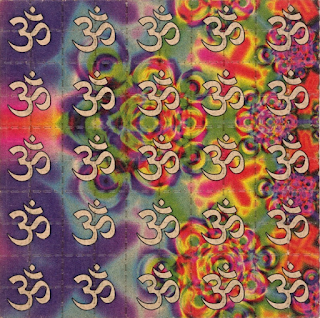WEEK 7 BLOG
Week 7- LSD, COCAINE, ART
I believe that the human brain is an intricately beautiful object. Its complexities and capabilities truly amaze me. This weeks unit focused on the mind and the brain. Professor Vesna’s last lecture was centered on neuro-chemicals and specifically drugs.
 | |
|
Cocaine began as a medicine. In the early 1880s, pharmaceutical houses touted it as a cure for everything from morphine addiction and depression to dyspepsia and fatigue. It was widely available in tonics, powders, wines and soft drinks before its mass consumption created a large group of raging addicts demanding medical attention. Even Sigmund Freud used and administered cocaine in a medical setting. Frued’s research with cocaine effects was due to a personal reason. Frued wanted to help a friend that had a morphine addiction by using cocaine. After experimenting with the drug, Frued himself became addicted. Frued’s downfall came when he administered too much cocaine to a patient which ended up killing her.
 |
| LSD tab art |
When talking about LSD, Albert Hofmann must be mentioned. Regarded as the “father of LSD”, Dr. Hofmann first synthesized the compound know now as LSD in 1938. He did not discover its medical effects until five years later, when he accidentally ingested the substance that became known to the 1960’s counterculture as acid. He took LSD hundreds of times, but regarded it as a powerful and potentially dangerous psychotropic drug that demanded respect. More important to him than the pleasures of the psychedelic experience was the drug’s value as a revelatory aid for contemplating and understanding. Later figures like Al Hubbard and Dr. Timothy Leary both advocated LSD and other psychedelic drugs for medical use.
LSD and other psychedelic drugs also have their place in art. By altering the reality of a user, these type of drugs have powerful effects that inspire artists. For example, taking a very small amount of psychedelics like LSD or mushrooms is becoming especially popular among Silicon Valley creators, who say it helps them think outside the box. Beginning in the 70s, LSD dealers started printing trippy, colorful artwork on the tabs they sold. Artist, Mark McCloud, has collected over 30,000 of these old tabs of acid and has put them on display.
 | |
|
It is very interesting to look at the history of cocaine and LSD. Both of these drugs have a terrible reputation, but it is very cool to look beyond the reputation to take another look at their effects.
sources:
Evans, Jill Blackmore. “Dark Web's LSD Dealer Hosts Art Contest.” Dark Web LSD Art Contest: Psychedelic Art of 1970s Drug Tabs, Format Magazine, 21 Nov. 2016, www.format.com/magazine/news/art/lsd-art-dark-web-competition. Accessed 22 May 2017.
Uconlineprogram. “Neuroscience pt3.” YouTube, YouTube, 16 May 2012, www.youtube.com/watch?time_continue=199&v=E5EX75xoBJ0. Accessed 21 May 2017.
“Sigmund Freud's cocaine problem.” CNN, Cable News Network, 22 July 2011, thechart.blogs.cnn.com/2011/07/22/sigmund-freuds-cocaine-problem/. Accessed 22 May 2017
Smith, Craig S. “Albert Hofmann, the Father of LSD, Dies at 102.” The New York Times, The New York Times, 29 Apr. 2008, www.nytimes.com/2008/04/30/world/europe/30hofmann.html. Accessed 22 May 2017.
“Timothy Leary.” Encyclopedia of World Biography, Encyclopedia.com, www.encyclopedia.com/people/social-sciences-and-law/social-reformers/timothy-francis-leary. Accessed 22 May 2017.
Image sources:
all 3 images from:


I see that you focus on the relationships between LSD and cocaine and art. You have a very thorough summary and what the professor mentioned in the lecture and also extended the materials with your own thoughts on it. Indeed, I found it amazing too when looking back to see how drugs which people consider negative nowadays had a dramatic effect on artists in terms of creating.
ReplyDeleteWow, nice analysis of the history of LSD and cocaine! Its most definitely interesting to here the perspective of those who choose not to abuse the drug and use it for artistic, expressive purposes. If these drugs were once administered as aids to health, what is different in today that makes it illegal? If administered right should it be legalized, and would it be worth it? Would the artistic discoveries brought from drug usage be worth the risk? These are some questions that I pondered as I was reading this, so I definitely appreciate the interesting read!
ReplyDeleteMicheal, this was very well written. Me and you both had similar interest in the concept of drugs and their effects on the brain. The debate on the use of drugs in the medical field is huge these days, and your blog opens up my thoughts to the topic even more. Keep up the great work, really enjoy reading your blogs weekly.
DeleteIt is actually good which anyone have actually revealed hence exciting page.I am pleased which we discovered your web page. I am just looking forward to study an additional, worthwhile post.
ReplyDelete